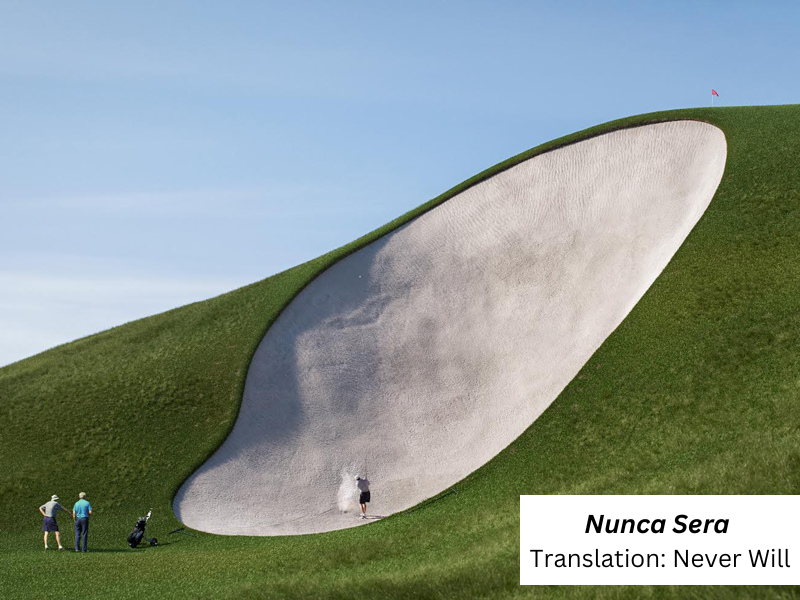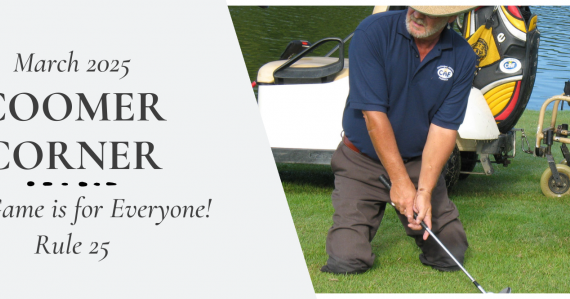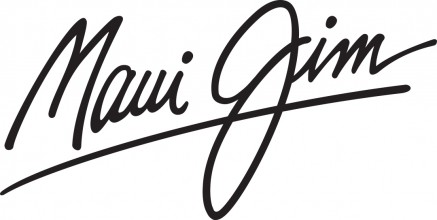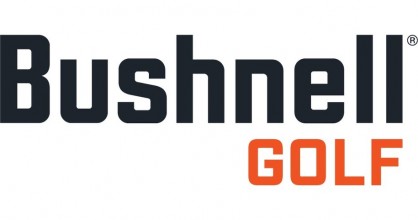
News
The Coomer Corner - Just a Day on the Beach!

Just A Day On The Beach!
(Rules for the Game of Golf)
Did you know there have been studies by specialists in the golf industry as to what type of sand is best to use in golf course bunkers? Of course, you did. You even have your own favorite type of sand to play out of when you occasionally find those hollows of discomfort. In a report published by the USGA, experts say the size and shape of the sand particle, along with resistance to wind and water erosion, crusting potential, chemical stability, and color influence the quality of the golf experience you will have during your round. That is a lot to consider no matter if you are the course owner or are paying your hard-earned dollar to play on this legendary course. But we all must agree the bunker (sand trap) has come a long way since the Scottish sheep laid down in the sandy linksland to protect themselves from the North Atlantic storms and left their impressions in those pastures.
Today we have the famous white bunkers of Augusta National, the church pews of Oakmont Country Club, the waste areas of Harbour Town Golf Links, Hell’s Half-Acre at Pine Valley Course, and even one of the largest bunkers ever created in the country of Portugal at Algarve (?). Many golf courses have been designed and built to feature beautiful architecturally designed bunkers with shapes of famous people, animals, cartoons, and fauna. Unfortunately, many of those have been altered after just a few seasons of futile maintenance and replaced with grass. It takes a lot of time, money, and effort to maintain these sandy features so it’s easier to just mow a few strips of grass and be done with it.
Leading the way in the number of bunkers on one golf course is, by far, Whistling Straits in Wisconsin. The total number is reported to be 967 bunkers with 96 of them on the final hole itself. I’ll bet the local club-makers keep a good inventory of wedges in stock.
Now that you know a little bit of the background of bunkers, let us dive into the rules associated with them. Rule 12 Bunkers says the players are to be tested on their ability to play a ball from the sand from a specially prepared area. Restrictions are set as to not allow the player to touch the sand before the stroke is made and where relief may be taken, if allowed.
The ball is actually in the bunker only if it touches sand inside the edge of the bunker, rests on the sand or ground where the sand would normally be or is lying on a loose impediment or movable obstruction in that area. Abnormal conditions such as temporary water or touching an integral object are also included in whether a ball is inside a bunker.
Our friends who re-wrote several of the rules for the 2019 modernization may be memorialized someday for their achievement and one of the rules most affected by those changes concerns the bunkers. Removing loose impediments is a game changer along with the option to never play a shot from the bunker at all. The loose impediment removal is now joined at the hip with movable obstructions. There is no penalty for removal of these distractions except to move the ball at rest when moving a loose impediment. A penalty stroke will apply to that breach.
To eliminate taking a shot from the bunker, it will cost you a total of two strokes. This is to take an unplayable ball procedure and find the relief area associated with the option provided. It sounds expensive but there have been vast amounts of shots and time spent in bunkers with little success so it may be well worth the price of the penalty.
Sand is a sacred thing, so to speak, because there are restrictions when you cannot touch the sand. Deliberately touching the sand with your hand, a club, a rake, or other objects when trying to test the condition is a huge violation of the rule and strictly enforced. Also included in those restrictions are grounding your club in front or behind the ball, making a practice swing and making the backswing for a stroke.
As in many other rules, there are always exceptions. Those include digging in to take a stance, smoothing the bunker to care for the course, placing clubs and other equipment in the bunker, measuring, marking, lifting, replacing, leaning on a club for balance or to prevent falling and even striking the sand in frustration or anger as long as none of these actions improve the conditions of the stroke.
Once the ball has been played and lies outside the bunker or if the player intends to take relief outside the bunker, there are no restrictions to his actions inside the bunker.
Care of the course includes other actions that help improve the conditions before, during or after you have taken a stroke and include replacing divots and repairing ball marks, but just as the situations when you are in a bunker, it’s the timing that is important. To take the safest route and not be penalized, try waiting until after your stroke before you engage in these practices.
From fairway bunkers to greenside bunkers to waste bunkers, there will always be course designers hoping to block your way to success and your lowest rounds. Don’t only practice those shots but know what you can do when you are in those sandy graves. By the way, don’t be confused if your playing partners use other words for bunkers. You may want to try out a few of these yourself.
SANDBOX – BEACH – CRAB SHACK – CAT BOX – PENALTY BOX – POTHOLE – DUST BOWL – SAND EMPORIUM - SAHARA

















































